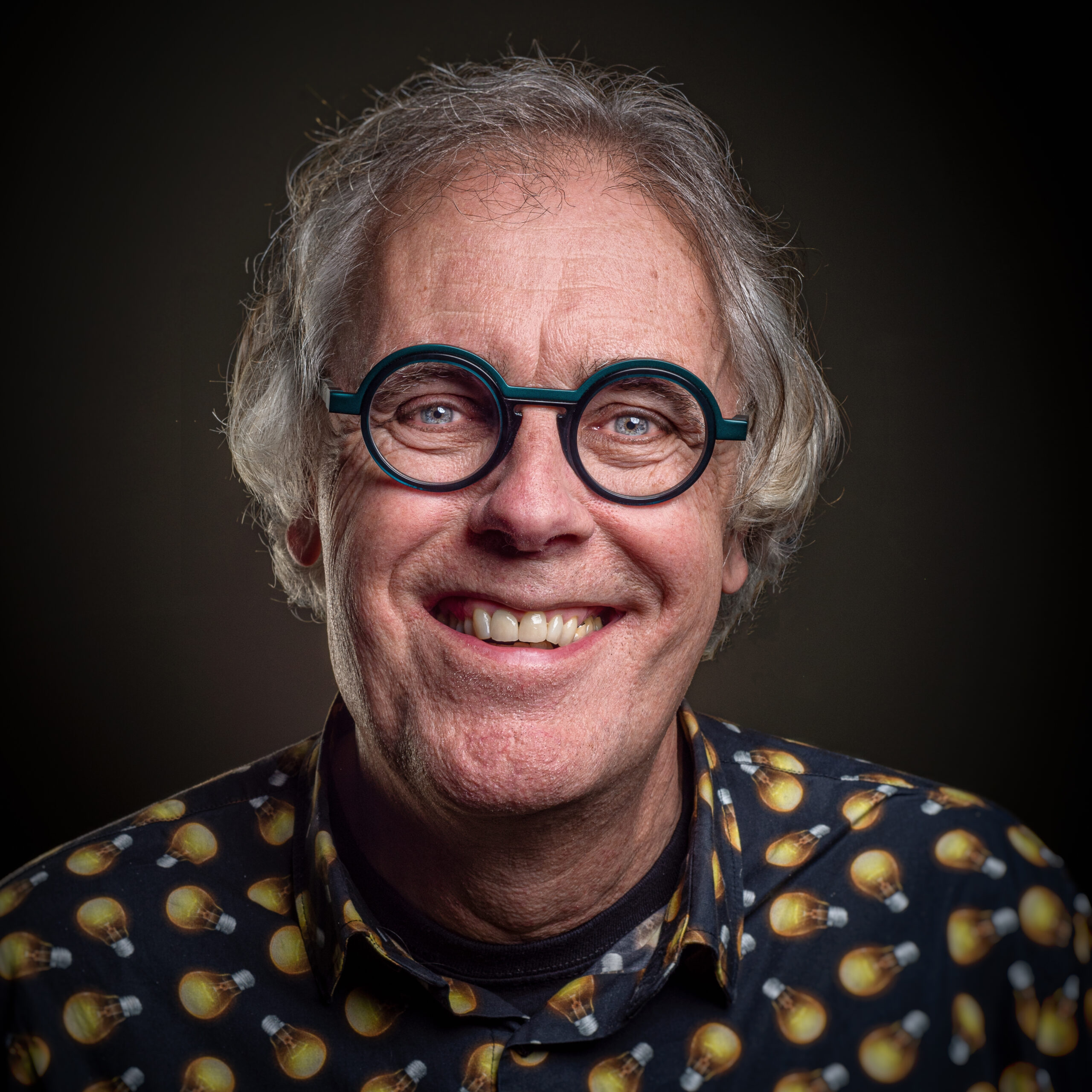On 29 July 2021, more than four centuries after the invention of the telescope, the man who initiated a revolution in astronomy was finally honoured with a life-sized bronze statue.
In the herb garden of the Middelburg Abbey, in the very southwest of the Netherlands, he sits on a bench, holding a small tube to his eye, gazing at the sky.
More astronomy history

No, it’s not Galileo Galilei, although some popular books still suggest that the Italian astronomer was the one to build the first spyglass.
And no, it’s not the father of two boys who were playing with lenses and accidentally discovered the magnifying effect of their combination.
That’s a romantic, but completely apocryphal, 18th-century story.
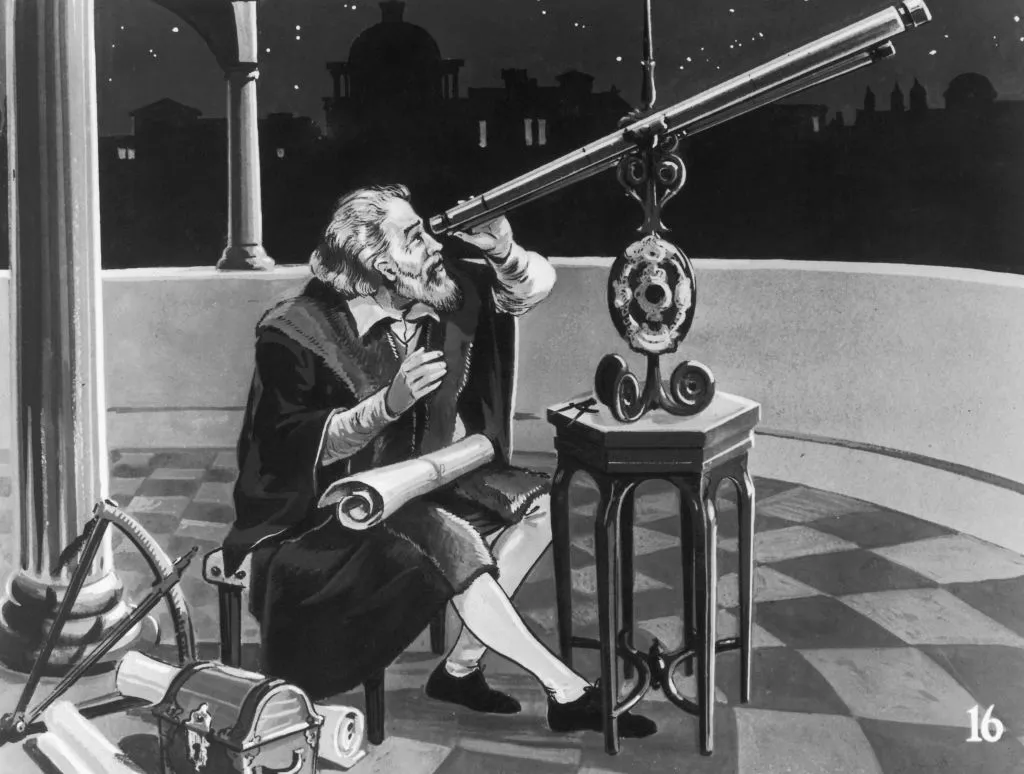
So who really invented the telescope?
A better question might be: why wasn’t the telescope invented much earlier? After all, lenses – in the form of transparent rock crystals – were already known to the Greeks and Romans.
The Arabs (in particular, 11th-century Ibn al-Haytham, better known as Alhazen) studied optics, inspiring English polymath Roger Bacon (1219–1292).
Spectacles appeared on the scene at the end of the 13th century. Indeed, some believe that scientific all-rounder Leonardo da Vinci (1452–1519) already discovered the principle of the telescope.
However, it wasn’t before the start of the 17th century that Hans Lipperhey (or Lippershey) (1570–1619), a spectacle maker in Middelburg, build his first device for “seeing things far away as if they were nearby”.
It was a simple cardboard tube with a convex lens at one end and a concave eyepiece at the other, yielding a magnification of about three times.

Lipperhey's telescope
Lipperhey’s patent application, dated 2 October 1608, is the oldest known document in history that describes a telescope.
A (daytime) demonstration of the instrument at the States General in The Hague, in the presence of Dutch Prince Maurice and other dignitaries, was so successful that the Middelburg merchant was ordered to build three bigger instruments, as well as a binocular.
The Netherlands were at war with Spain, and the military potential of the telescope was obvious to everyone.
Interestingly, the patent was not granted, on the grounds that the design was already known, as the States General soon received at least two similar applications, one from instrument builder Jacob Metius (1571–1628), who also claimed to have invented the device.
Even back then, it seems it was hard to find out who really had been the first.
The idea – and, who knows, maybe the first simple telescopes – may have been around for a decade or more.
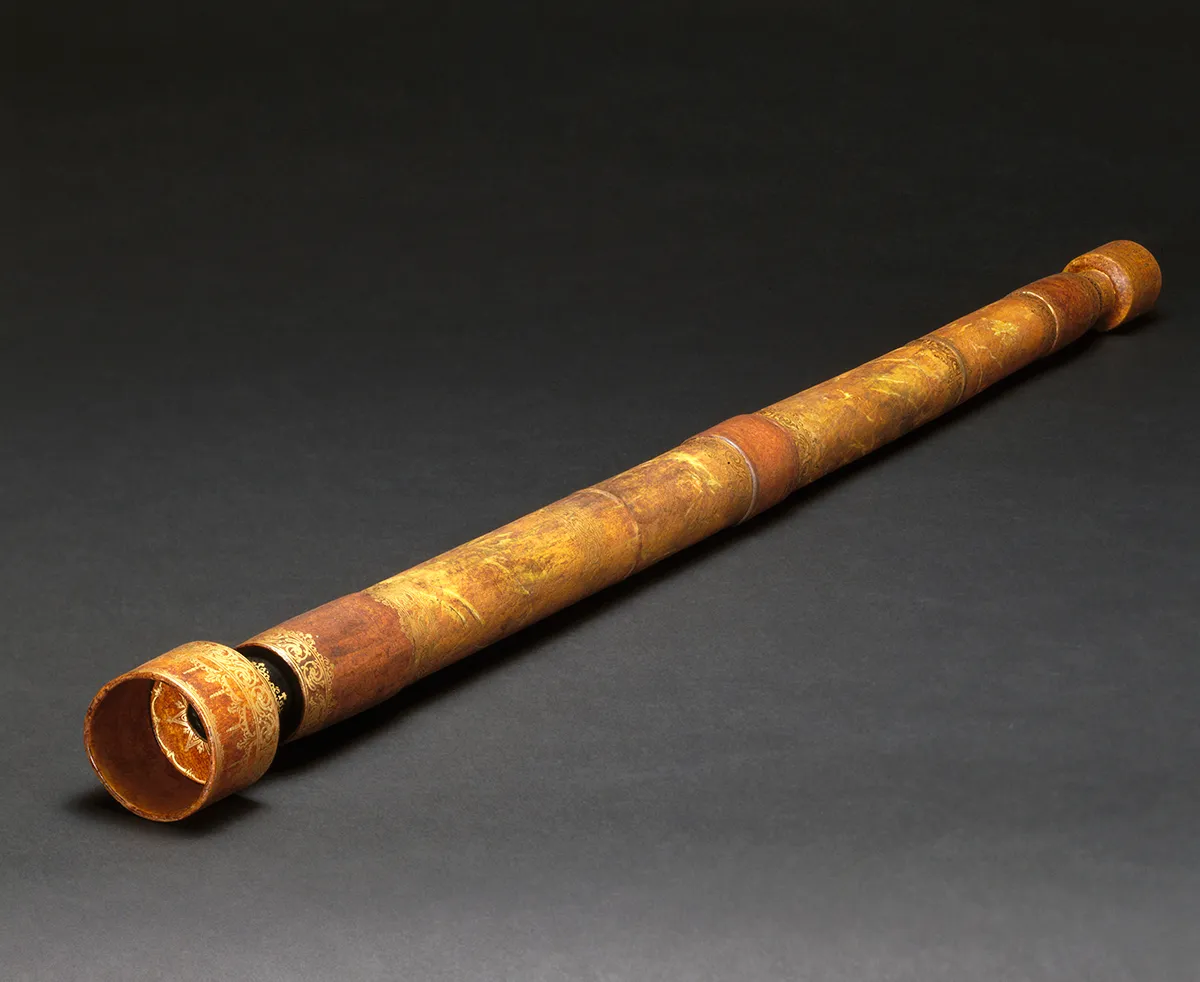
Other potential telescope inventors
In his 1656 Latin booklet De vero telescopii inventore (‘The true inventor of the telescope’), French scientist Pierre Borel argued that the instrument was first conceived by Zacharias Janssen (1585–1632), a young spectacle maker and colleague of Lipperhey, who lived around the corner in Middelburg.
That story, largely based on what Borel was told by Janssen’s son, has persisted for centuries, but has never been substantiated.
More intriguing is a passage about ‘perspective glasses’ in the 1571 book Pantometria by the English mathematician and astronomer Thomas Digges (1546–1595). As Digges writes:
“...whereas the first appearance an whole Towne shall present it selfe so small and compact together that yee shall not discerne anye difference of streates, yee may by application of Glasses in due proportion cause any peculaire house, or roume thereof [to] dilate and shew it selfe in as ample forme as the whole town first appeared.”
The late British astronomy author Colin Ronan has argued that Digges describes an unwieldy, mirror-based ‘Elizabethan’ telescope built by his father Leonard between 1540 and 1560.
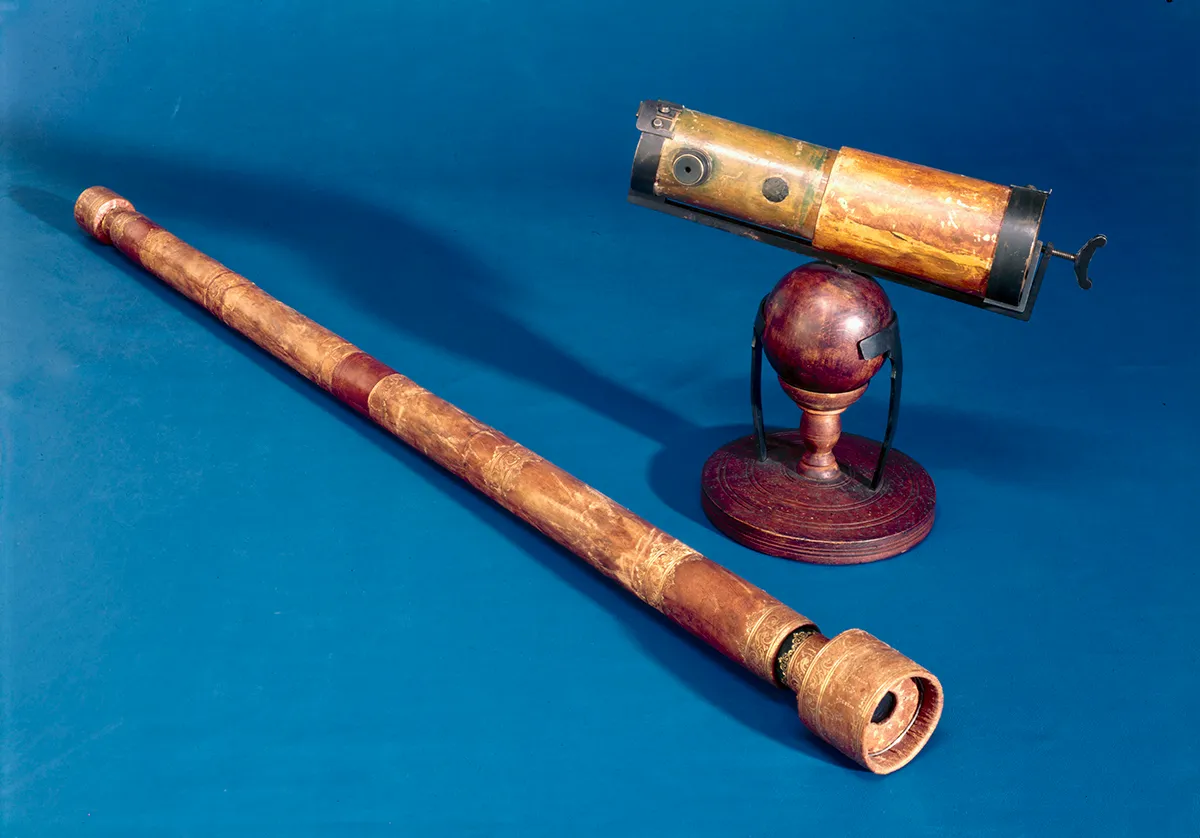
Turning the telescope to the stars
We may never really find out who invented the telescope, the most important instrument in the history of astronomy.
But according to a comprehensive 1977 study by Dutch science historian Albert van Helden, Lipperhey holds the best cards.
If only for the fact that his patent application of 1608 is the earliest record of a tangible physical telescope.
Before the summer of 1608, the device is mentioned nowhere at all. One year later, simple telescopes are all over the place in Europe.
And 413 years after the fact, Lipperhey finally – and rightfully – got immortalised in bronze.
Hans Lipperhey wasn’t a scientist. It’s likely that he did train his “tube to see far” on the Moon and the stars, but his first instruments were of poor optical quality, and military applications seemed more important to him than astronomical use.
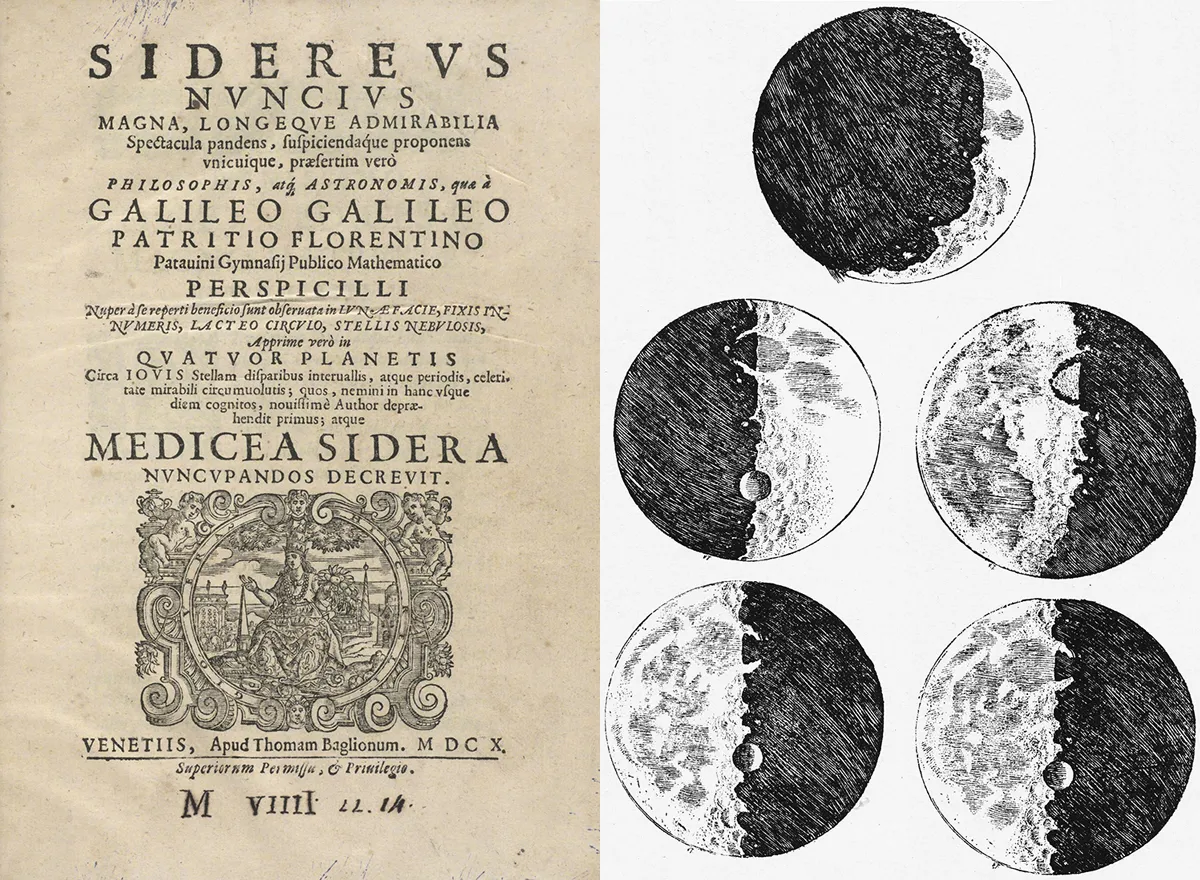
But when Galileo heard about the Dutch invention (probably in June 1609, but maybe even earlier), he immediately realised its scientific potential.
Before long, he built his own telescopes and started to observe the Moon, the Sun, the planets and the stars.
He wasn’t the first to recognise the astronomy possibilities of the telescope.
On 5 August 1609, English astronomer Thomas Harriot (1560–1621) made the very first telescopic drawing of the Moon – almost four months before Galileo’s lunar sketches.
But thanks to his revolutionary observations of the moons of Jupiter, the phases of Venus, and dark spots on the Sun, Galileo is generally regarded as the father of telescopic astronomy.

Kepler’s lenses
In 1611, German astronomer Johannes Kepler (1571–1630) realised that the ‘Dutch’ telescope could be improved by using a convex eyepiece instead of a concave one, which yielded an inverted image but a substantially larger field of view.
However, it wasn’t until 1630 that Christoph Scheiner (1573–1650), a German scientist and Jesuit priest, actually constructed the first working ‘Keplerian’ telescope.
Soon enough, astronomers all over Europe were building bigger and better instruments, including the 46-metre-focal-length (150ft) giant of Polish councillor and brewer Johannes Hevelius (1611–1687)and the high-quality telescopes of Dutch physicist and astronomer Christiaan Huygens (1629–1695), who discovered the true nature of the rings of Saturn, the planet’s largest moon Titan, and dark markings on the surface of Mars.
However, telescope lenses have one big disadvantage. They can only be supported around their edges, and lenses larger than about one metre (3.2ft) in diameter start to sag under their own weight.
That’s why all modern telescopes are reflectors rather than refractors, using mirrors instead of lenses to focus starlight.
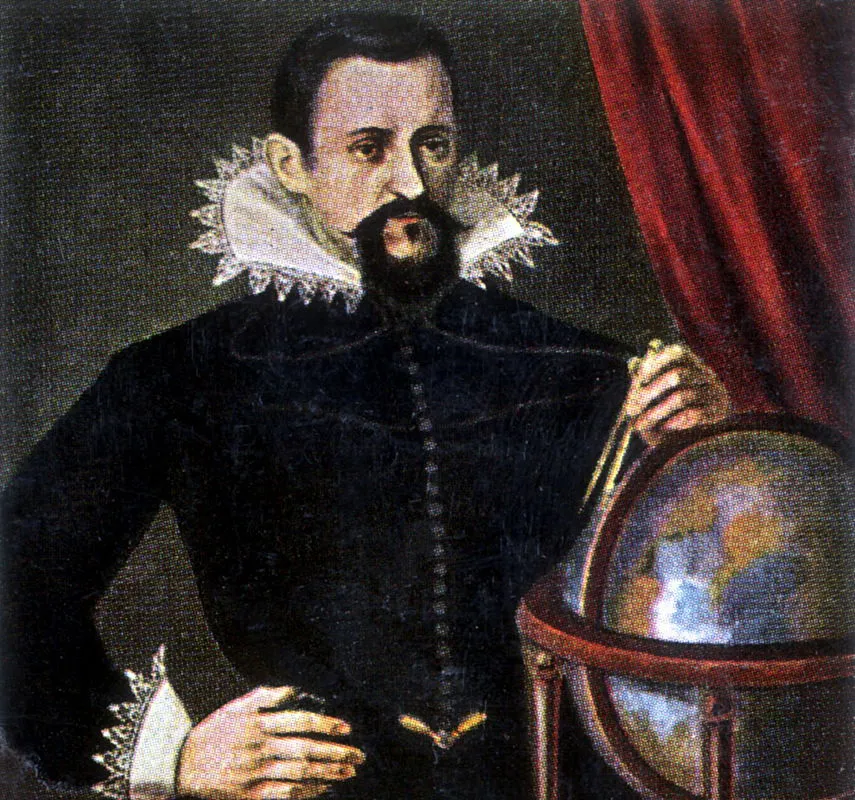
Reflector telescopes
The first reflecting telescope was built in 1668 by English genius Isaac Newton (1643–1727), and featured a speculum metal mirror – an alloy of tin and copper, polished to high reflectivity.
Large reflectors didn’t appear until the 18th and 19th centuries, culminating in the huge instruments of William Herschel (1738–1822) and William Parsons (Lord Rosse, 1800–1867).
The big breakthrough only came after German chemist Justus von Liebig invented the process of depositing a very thin layer of silver (or aluminium) on a glass mirror blank, in the 1850s.
Using this new technology, telescope mirrors were more reflective and could be recoated without damaging their precise parabolic shape.

Bigger and bigger telescopes
That brings us into the 20th century, when the focus of big-telescope building had shifted from Europe to the United States, with the 1.5-metre (60-inch) and 2.5-metre (100-inch) reflectors on Mount Wilson (completed in 1908 and 1917, respectively) and the venerable 5-metre (200-inch) Hale Telescope
on Palomar Mountain (1948), all built in California.
To increase size beyond this was difficult; mirrors this large, with the stiffness required to not bend, are extremely massive, leading to bulky and excessively expensive instruments.
To go larger – a prerequisite to obtain higher sensitivity and sharper images – new technologies were needed.
Over the past decades, telescope building has experienced revolutionary developments.
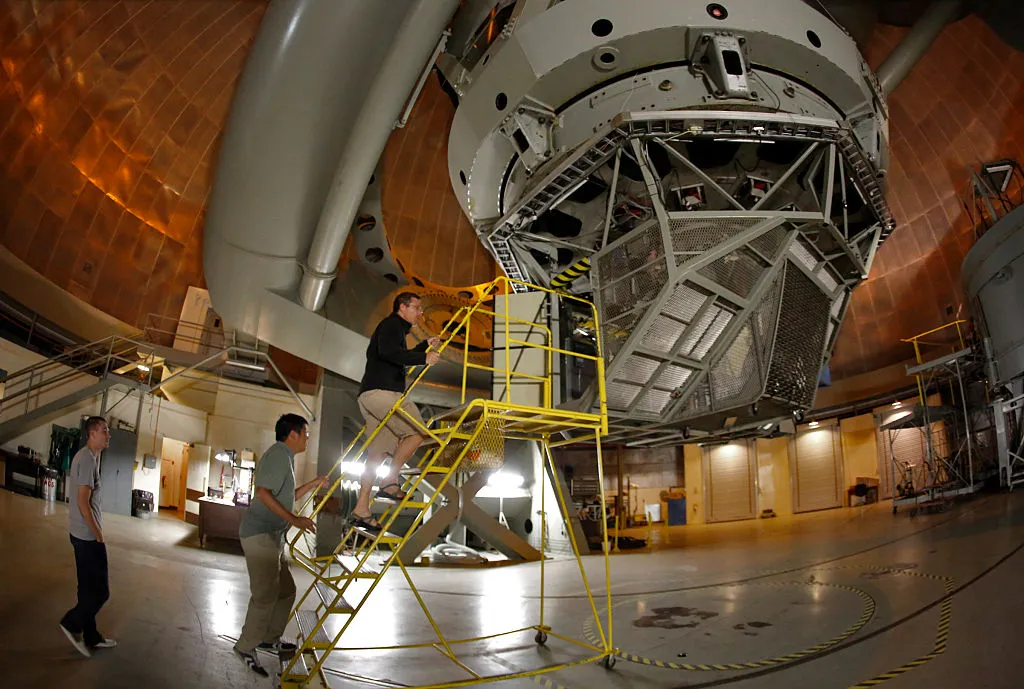
Today, numerous single-piece mirrors with diameters of more than 8 metres (26 ft) are in operation, supported by computer-controlled actuators to maintain their perfect parabolic shape despite gravity, temperature variations and wind load.
‘Jigsaw’ mirrors, consisting of dozens of hexagonal segments, can be even larger.
In Chile, the European Southern Observatory is building its Extremely Large Telescope, with 798 mirror segments and a whopping diameter of 39.2 metres (130ft).
Meanwhile, adaptive optics takes care of atmospheric turbulence, guaranteeing razor-sharp images, while individual telescopes can work together as high-resolution interferometers.
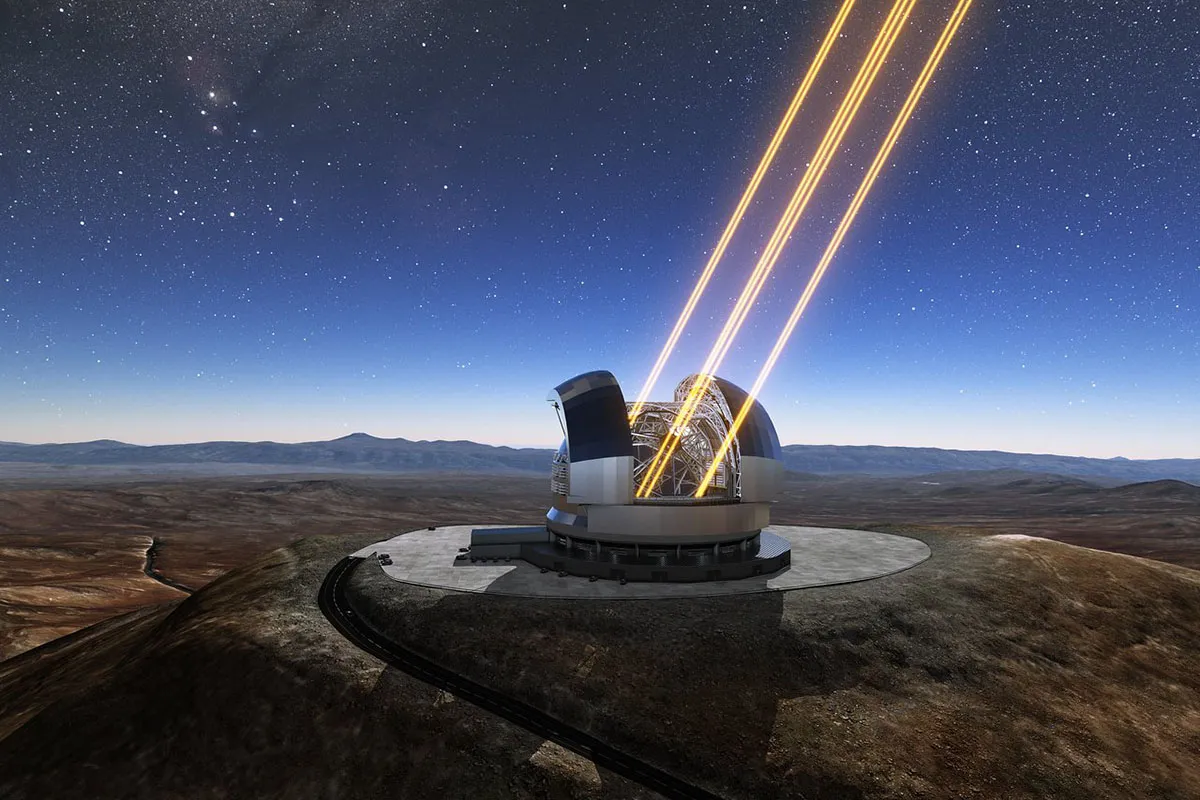
The telescope's legacy
Four centuries of telescopic history have unveiled the birth and evolution of stars, the formation of planets, the majesty of galaxies and the intricacies of the expanding Universe.
Without the pioneering work of people like Digges, Janssen, Metius and Lipperhey, astronomy would still be very much in the dark – maybe more akin to philosophy and religion than to true physical science.
The Middelburg spectacle maker, immortalised in bronze in the garden of the Abbey, his invention held to his eye, couldn’t possibly have imagined what he set in motion when he mounted two small lenses at each end of a cardboard tube.
Asteroid 31338 has been named after him, as well as a lunar crater in Mare Nubium and a giant exoplanet more commonly known as 55 Cancri d.
But Lipperhey’s main legacy is our ability to see way beyond the limits of the human eye, all the way to the edge of the observable Universe and back to the beginning of time.
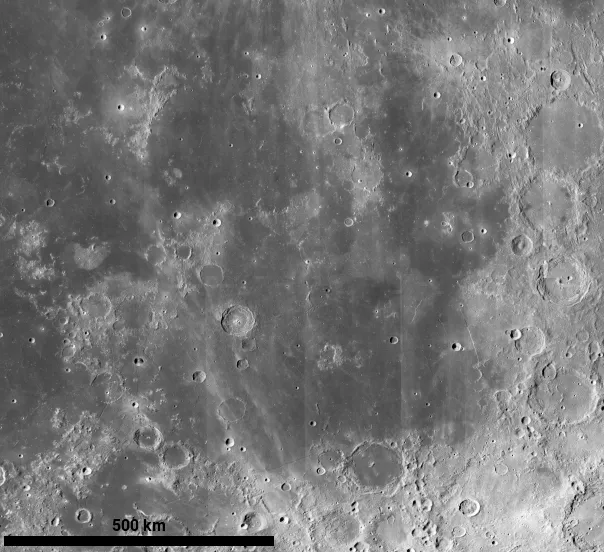
From blurry to brilliant
To achieve the precision of today’s telescopes, telescope builders have overcome numerous technical challenges. Here are some of their key innovations
Problem: poor glass quality
The earliest lenses were made by glassblowers. Imperfectly shaped, they contained lots of impurities, leading to distorted images.
Solution: Lathe-like lens-grinding machines, first brought to near-perfection by Christiaan Huygens, created telescope lenses that had the right optical properties across their whole surface.
Problem: chromatic aberration
Lenses focus starlight through refraction, the same process that makes a rainbow when white light passes through a prism. But violet light is bent more than red light. As a result, stars appear as tiny rainbows through a refracting telescope.
Solution: Composite, ‘achromatic’ lenses consist of a convex lens of crown glass and a concave lens made of flint glass, whose colour distortions largely cancel each other out. The technique was invented by English amateur optician Chester Moore Hall around 1730.
Problem: atmospheric turbulence
Stars twinkle because of turbulence in Earth’s atmosphere – a romantic sight, but a big problem for astronomers who want to obtain sharp images of the night sky.
Solution: By measuring the turbulence hundreds of times per second using artificial laser guide stars, a small mirror in the light path can be made to rapidly flex and wobble in such a way as to precisely compensate for the atmospheric distortions – a technique known as adaptive optics.

Telescopes for invisible light
There’s more in the electromagnetic spectrum than meets the eye.
William Herschel discovered infrared light in 1800. One year later, German physicist Johann Ritter discovered ultraviolet light.
Both types of radiation can be observed using ‘normal’ telescope mirrors and special detectors.
However, ultraviolet and the longer wavelengths of infrared are largely absorbed by Earth’s atmosphere and can only be observed from space.
To study cosmic microwaves (sub-millimetre and millimetre wavelengths) and radio waves (everything longer than about 3cm), large dish antennas and special receivers are needed.
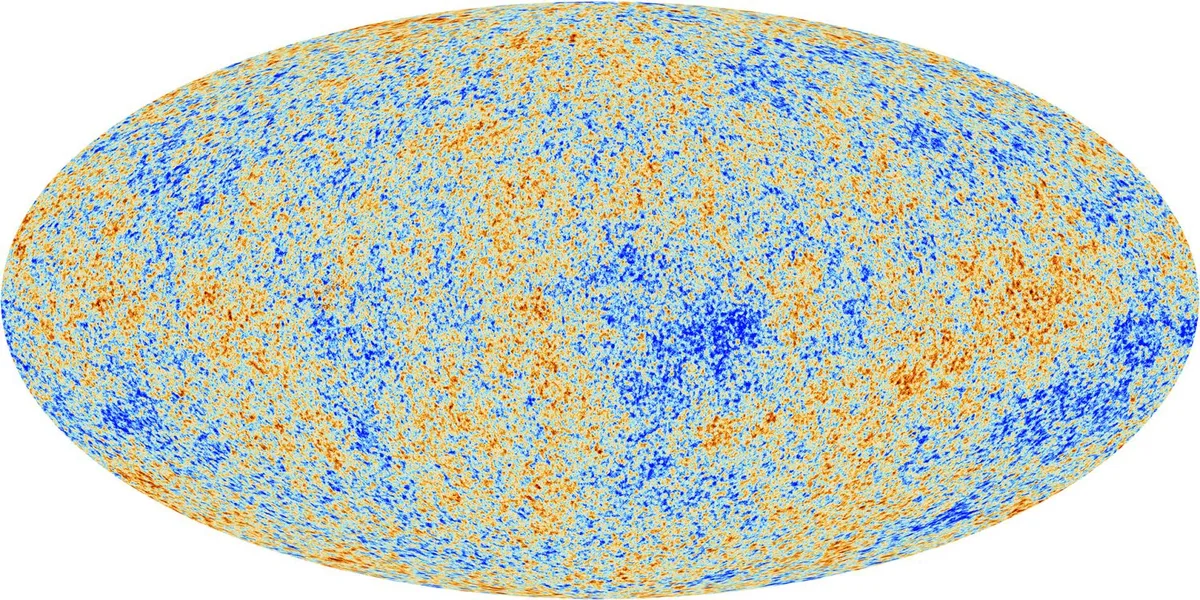
Radio astronomy was born in the 1930s and radio telescopes only started to yield serious results in the 1950s.
At the short-wavelength end of the spectrum, X-rays and gamma rays can only be observed from space.
X-ray telescopes often use ‘grazing incident mirrors’ to focus the energetic X-ray photons on electronic detectors; gamma rays can only be detected by special particle-physics devices that register the energy deposited by an incoming gamma ray.
This article appeared in the July 2025 issue of BBC Sky at Night Magazine
